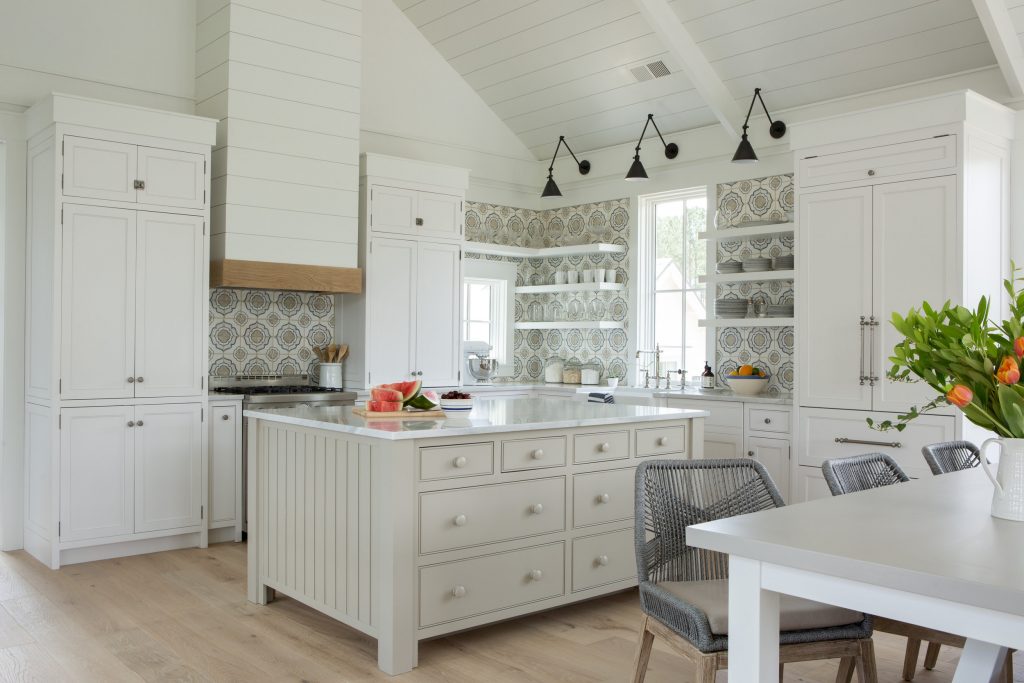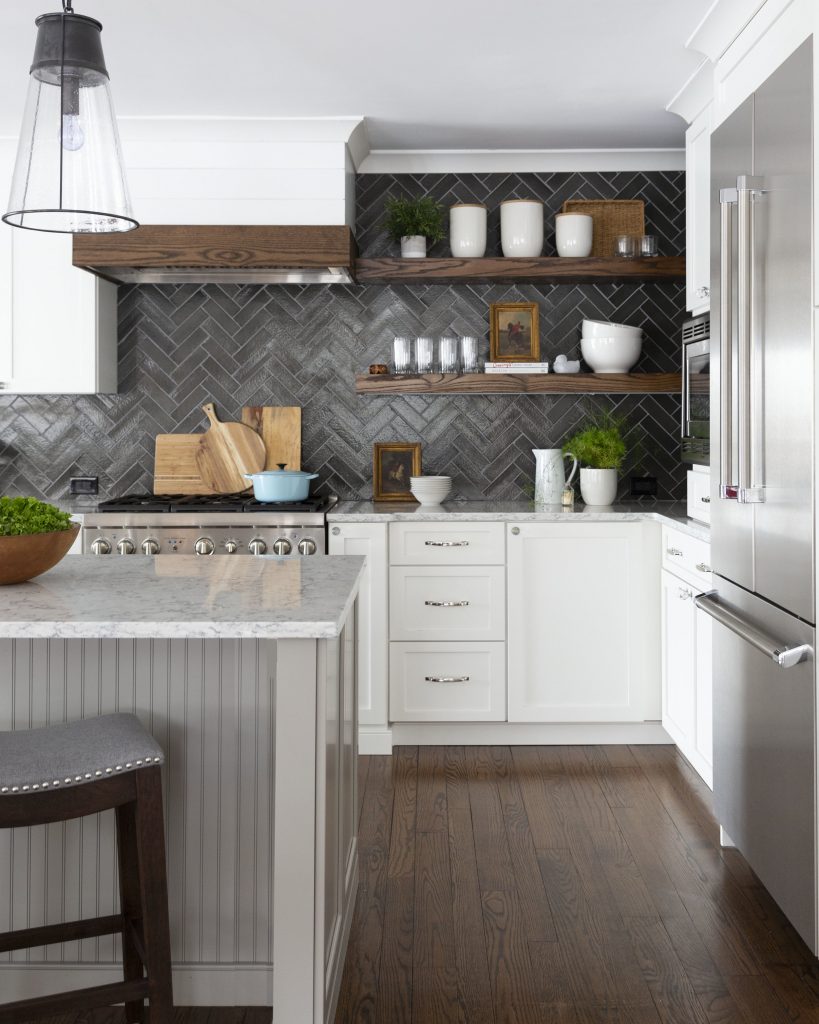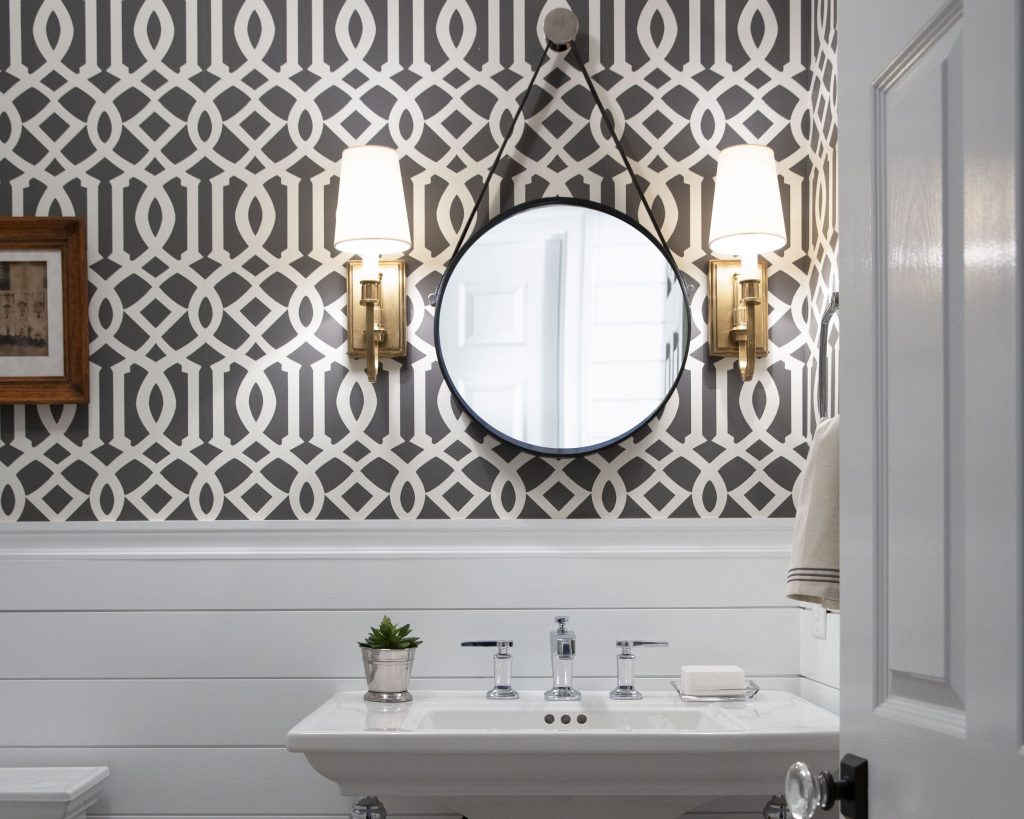
Many of today’s biggest home decor trends are here one minute and gone the next. Where rose gold metallic accents and macrame wall hangings have been popular in recent years, now other items are taking their place.
And whether you added a pretty rose gold kitchen faucet to your master bath or changed your living room decor to match that oversized macrame hanging, you’ll soon be spending more time and money refreshing these outdated items.
Luckily, not all trends fall to the wayside. One timeless trend that continues to be a popular choice in every type of room — and which tends to get a refresh every few decades — is geometric patterns. Keep reading to learn where this trend began and what you need to know about using it in your home.

A History of Geometric Decor
It’s impossible to say exactly when or where geometric tiles first appeared. Perhaps the most famous examples in history are the Islamic tiles that cover archways, floors and walls in beautiful colors and breathtaking patterns. But while those tiny tiles have certainly inspired plenty of today’s popular backsplash and shower wall designs, it wasn’t until recently that they began being copied in modern design. However, the patterns they create have been repeated in other home decor elements for decades.
Geometric decor first had its moment to shine in modern home decor in the midst of the Hollywood glam and drama of the 1920s. Art Deco and Art Nouveau styles were all the rage, and both incorporated richly colored and deep-hued tilework as well as patterned wallpaper. Complemented by these styles were modern accents, inspired by the growing German Bauhaus movement, which featured furniture made from steel with simple designs and gentle curves.
Geometric designs have resurfaced in a number of decades since the 1920s, each time in a different way. From the space-race-inspired patterns of the 1950s to the oversized florals of the 1960s, each new era has had its own take on the trend.

What’s Old is New Again
Today’s geometric decor has come a long way since the 1920s, but it’s still heavily inspired by yesterday’s trends. From tilework to patterned wall hangings, colorful patterns have come back into fashion once more.
A new take on these geometric designs has also surfaced. Today, you’ll find tessellating patterns repeated not just in fabric or on wallpaper but also in three-dimensional metal furniture and decorative items.
Geometric Designs in Every Room of Your Home
Unless you’re aiming for a retro feel, seek out geometric patterns in bright, modern colors and prints. Don’t be afraid to mix and match patterns, either. To keep your space from feeling crowded and overwhelmed, stick to a color scheme or choose large patterns with enough white space to keep them feeling fresh.
Accent a wall in your bathroom or your kitchen backsplash with fun geometric tiles. Then, choose a color from those tiles or even a simple, clean white to tie the rest of your space in and keep a smaller area from feeling too chaotic.
To incorporate this fun trend in your living room or bedroom, opt for geometric shapes on a rug, a large piece of hanging art, or even on an accent piece of furniture like a chair. Then, add in throw pillows, comforters and other smaller items in complementary patterns or in a similar color scheme. Finally, balance out these designs with modern furniture pieces in sleek designs. For instance, the low-profile and sleek lines of the Elm Sand 2pc Sectional is a soft accent that won’t detract from your other bold style choices.
If you prefer a more minimalist approach, you can still incorporate repeating shapes in a more subtle way. For instance, start with the Pipeline Natural 3-Pack Occasional Tables. Then incorporate other circular designs throughout the room like an oversized circular rug or a hanging mirror in the shape of a circle. Together, these elements take a timeless approach to this classic style.

Making a Timeless Trend Your Own
Geometric patterns have been around for centuries — and people have turned to this style to decorate their homes for decades. While it may rise and fall in popularity, it never truly falls out of style. Indeed, if you want pieces that will stand the test of time, choose simpler patterns and classic colors over trendier tones or styles. Add a few timeless furniture pieces and you’ll have a room that you’ll never tire of!






















